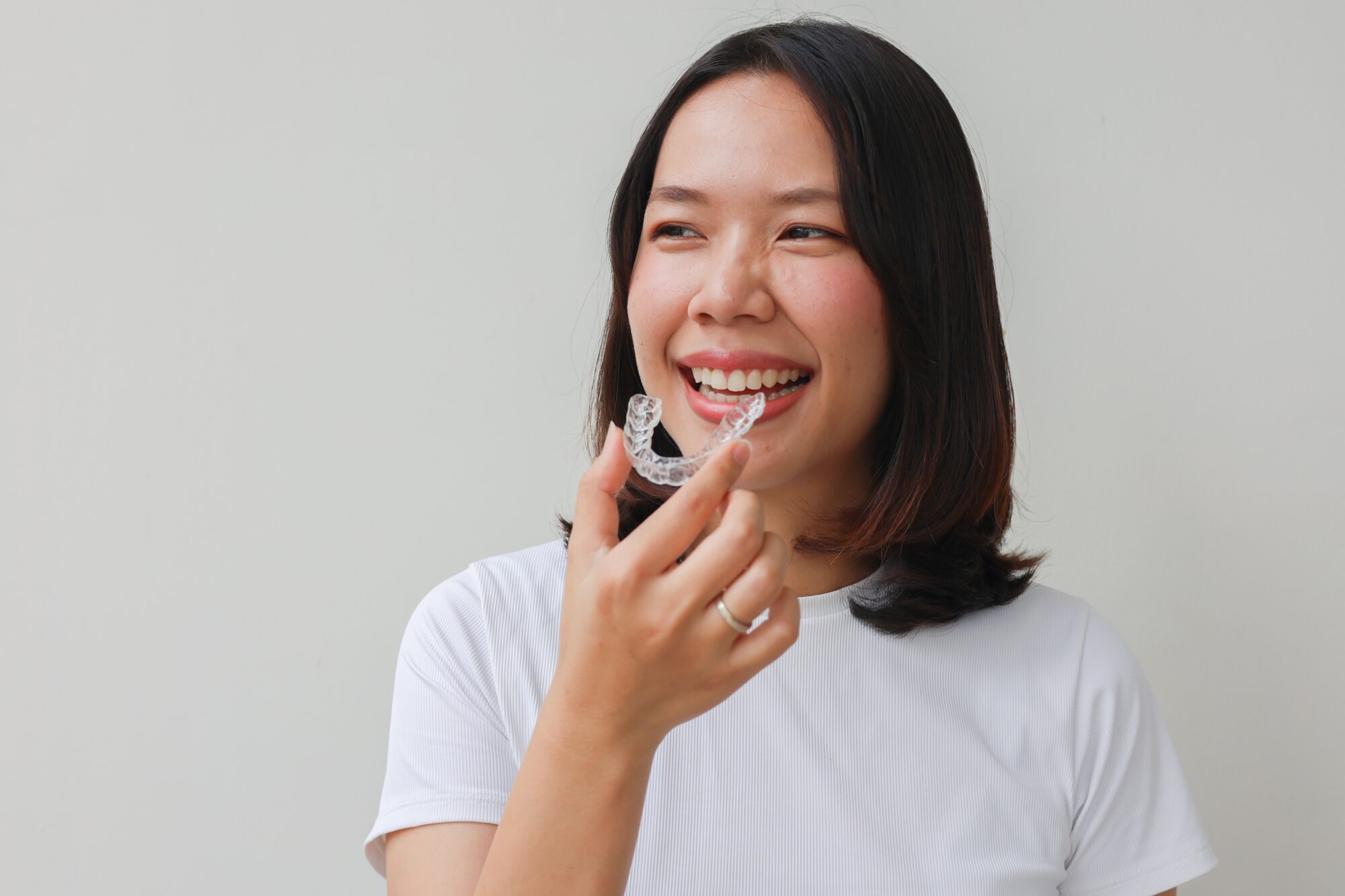At Master Orthodontics, we truly care about people first. This starts with getting you all the information necessary so you can get the best smile. Making the adjustment to braces can be difficult, but developing a hygiene routine can help as you treat your smile. Here are some tips for brushing your teeth with braces.
Start With A Pre-Rinse
It’s important to start your routine by swishing water around before you brush. Sometimes food can get stuck between your braces which can be difficult for your toothbrush to reach. Before brushing, rinse your mouth with water to dislodge any food particles stuck between your braces. Make sure to swish for about 30 seconds. Also, rinse your toothbrush before adding toothpaste, as this will shed debris and bacteria that may have lingered after your last brushing. Swishing with water before brushing is a great way to help loosen up food attached to your braces, making it easier to protect and perfect your smile.
Buy A Quality Toothbrush
Investing in a quality toothbrush is essential to getting the best results from treatment. Your toothbrush is your primary cleaning tool for maintaining healthy oral care. Using a high-quality toothbrush while you have braces ensures your teeth remain properly cleaned and give you the best chance for the most successful treatment. Both manual and electric toothbrushes work well to clean braces, but consulting your orthodontist is recommended before choosing a new toothbrush or changing your routine.
Electric brushes come in various styles with different appliances, so your orthodontist can help you decide what brush is right for you. The main types of electric brushes are usually battery-operated vs. rechargeable toothbrushes. Battery-operated toothbrushes typically cost less than rechargeables, which can range from $50 to $300, depending on features.
Manual, soft toothbrushes also work just fine to clean the areas around your brackets. However, many professionals recommend the orthodontic cut, where the bristles are in a subtle “V” shape, with the middle bristles being lower than the outer bristles.
Make Sure You Brush Thoroughly
When you have braces, it is vital that you take your time and thoroughly brush all the necessary surfaces of your braces and teeth. Experts say you should spend a minimum of two minutes actively brushing your teeth, but it may take you longer, especially when you are first getting in the habit of brushing with braces. If you’re having trouble reaching all the surfaces of your teeth due to the wires and brackets, try using a proxabrush after your regular brushing routine. Its small size and flexibility will help you clean under and around your braces.

Don’t Forget The Back
It’s easy to forget the back of your teeth when adjusting to brushing with braces, but they are
just as crucial in the cleaning process. Brush the backs of your teeth that face your mouth and throat. Pay most attention to brushing down at the gum line, as this is where most tartar builds. Brush the backs of your teeth that face your mouth and throat.
Maintain Proper Positioning
It may not be something you think about when brushing, but when dealing with braces, holding your brush in the correct position is crucial for proper cleaning technique and easing potential discomfort while brushing. When you brush, make sure you keep your toothbrush in the appropriate place—at a 45-degree angle, above the gum line. Keeping your toothbrush at a 45-degree angle will allow you to reach each tooth and give you the proper angle to scrub around each bracket in your braces and any food or bacteria that may have gotten caught.
Remember To Floss
It’s absolutely crucial you clean the spaces between your teeth. Flossing with brackets and wires attached to your teeth can be pretty tough, but it is a necessary step to keep your treatment intact. If you are using string floss, use a floss threader to maneuver the floss around your braces. Floss threaders are loops of thin material that make it easier to clean difficult-to-reach areas of your teeth and gums with the floss. They’re disposable, work with any regular floss, and are easy to find online or at any store with a dental section. Always be gentle as you move the floss against your teeth and gums. Alternatively, you can use a water flosser to clean the tight spots between your teeth.
Rinse Again
Once you have brushed and flossed, it’s time to rinse your mouth with an antibacterial mouthwash. This helps eliminate germs, removes any lingering food particles, and freshens your breath.
Before you decide that you’re done brushing your teeth, take a few minutes to look in a mirror and check for any leftover food. This step can help you evaluate your efforts and determine if you need to refine your routine. When you’re satisfied with your work, replace any elastics, bands, or removable orthodontic appliances and return all your tools to their proper places.

Get a Healthy Smile With Master Orthodontics
Dr. Carlos Caballero and our team at Master Orthodontics want to make sure you feel welcome, appreciated, and special when you walk through our door. Our goal is to help each of our patients achieve a beautiful and healthy smile. We serve patients of all ages around Bremerton, Port Orchard, Gig Harbor, and the surrounding areas. If you or someone you know is considering orthodontic treatment, call us for a free consultation!




